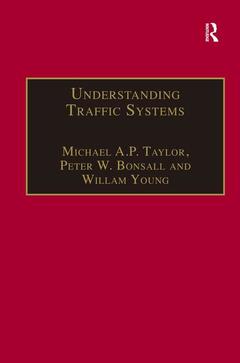Road traffic and its impacts affect all aspects of modern life, leisure and industry, with safety, congestion and pollution being of greatest public concern. Transport planning increasingly emphasises travel demand management (TDM) and traffic calming - aided by dynamic, lower cost data from Intelligent Transport Systems (ITS) - to enable real time monitoring, control and traveller information. This second edition of a highly successful work has been fully updated since its first publication in 1996 to reflect developments in technology available to the traffic analyst and in the social, ecological and economic environment. New sections are included on shockwaves, data capture without surveys, traffic incidents, delay estimation, off-line use of on-line data, environmental sensitivity, and controlled crash tests. The authors introduce and demonstrate techniques with which the analyst, engineer or planner can examine traffic problems. The underlying theme is that proper understanding of traffic systems performance and traffic problems can only come from the intelligent processing, refinement, appraisal and evaluation of traffic data. Arranged in five parts, the book offers an integrated approach to tackling road traffic problems: ¢ How to gain information and understanding about traffic ¢ The theories of traffic flow ¢ The principles of good survey planning and management ¢ Specific types of traffic studies ¢ Analytical techniques for transforming raw data into useful information. Understanding Traffic Systems provides cogent insights into the techniques of traffic data collection and analysis, the application of traffic theory and the role of data in analysis and decision making. Its breadth and use of examples from several countries make it a useful reference text for students and researchers, as well as an essential tool for practising traffic engineers and planners.




